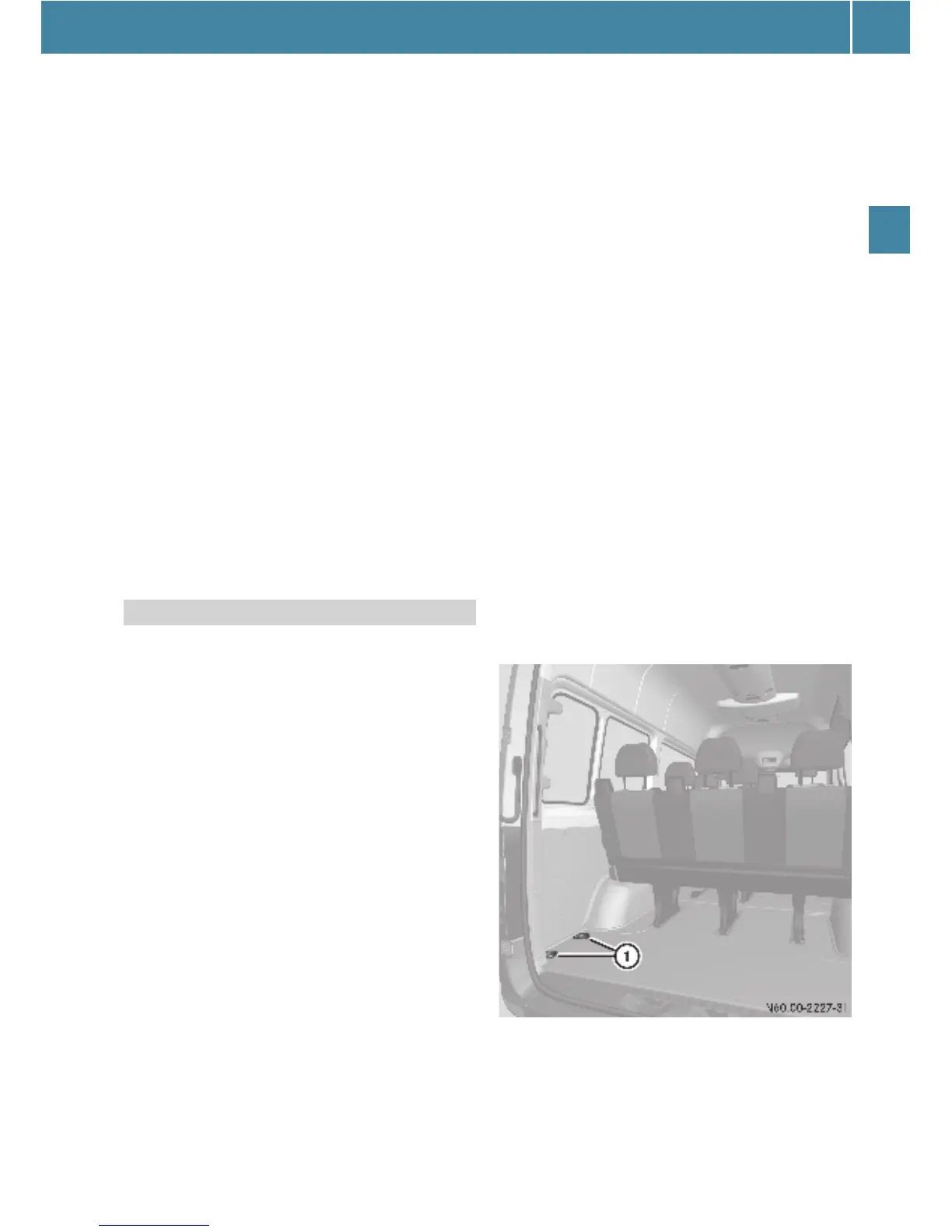Transporting
137
Controls in detail
For crewbus models:
E Always transport loads in the load com-
partment.
E Always place loads flush against the
seat backrests of the rear bench seat.
E Slide larger and heavier loads as far for-
ward as possible when looking in the
direction of travel. Stack items against
each other behind the rear bench seat.
E Always secure loads with suitable
transport aids or lashing materials.
Observe the following notes:
O do not stack loads higher than the up-
per edge of the backrests.
O transport loads behind seats that are
not occupied.
O if the rear bench seat is not occupied,
insert the seat belts in a crosswise pat-
tern into the opposite belt buckles.
As the driver of the vehicle, you are respon-
sible for ensuring that the load is secured
against slipping, tipping over, rolling or fall-
ing down, whether driving in normal traffic
situations or on poor road surfaces or as a
result of having to swerve to avoid an ob-
stacle or applying the brakes fully.
Failing to secure the load in accordance
with relevant requirements and sound
practice may be a punishable offense, de-
pending on national legislation and the
consequences that arise.
For this reason, observe the legal require-
ments in all countries concerned.
Before each journey and at regular inter-
vals during longer journeys, check whether
the load is secure and take additional ac-
tion to improve any incorrect or inade-
quate safety measures.
i Information about how to secure a
load correctly can be obtained from the manu-
facturers of transport aids or lashing materials
for securing loads.
E Fill up any empty spaces between the
load and the load compartment walls
or wheel arches in a form-fitting man-
ner. For this purpose, use solid trans-
port aids, such as chocks, wooden
blocks or storage cushions.
E Secure tilt- and tip-resistant loads in all
directions by using the lashing points
or lashing eyes and load rails in the
load compartment or on the load sur-
face, according to your vehicle's equip-
ment.
Only use lashing materials that have
been tested according to valid stan-
dards, such as lashing nets and straps.
Always use the lashing points closest
to the load to secure it in place, and
place padding around sharp edges.
i Lashing materials that comply with valid
standards can be obtained in any specialist shop
or from an authorized Sprinter Dealer.
If possible, use the lashing eyes when securing a
load, especially if it is heavy.
Lashing points (example illustration of
crewbus)
Securing a load
ee
